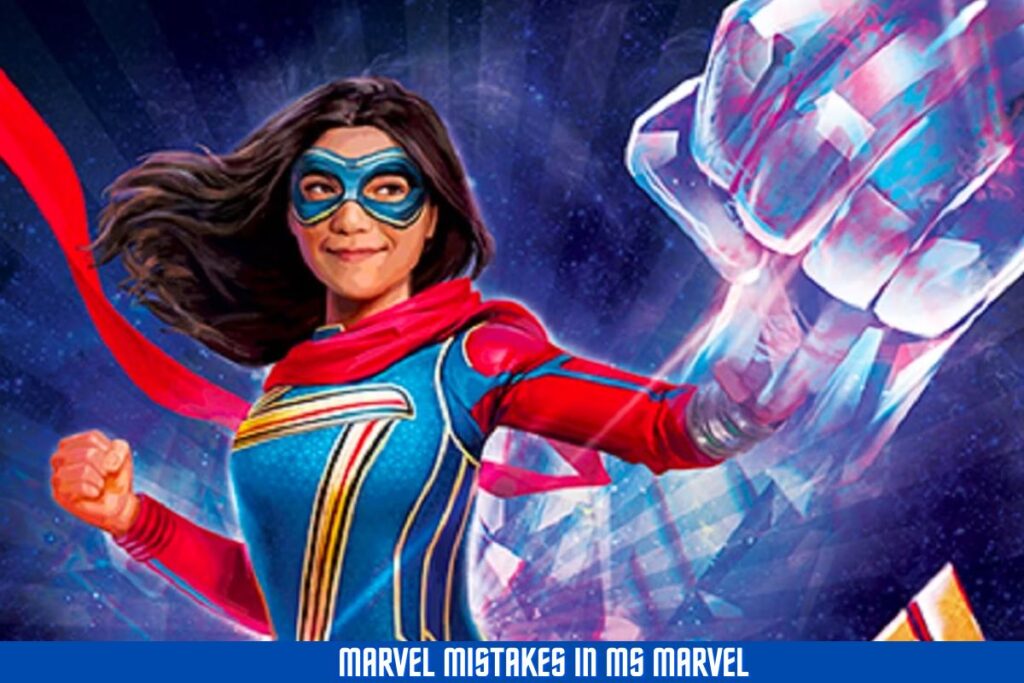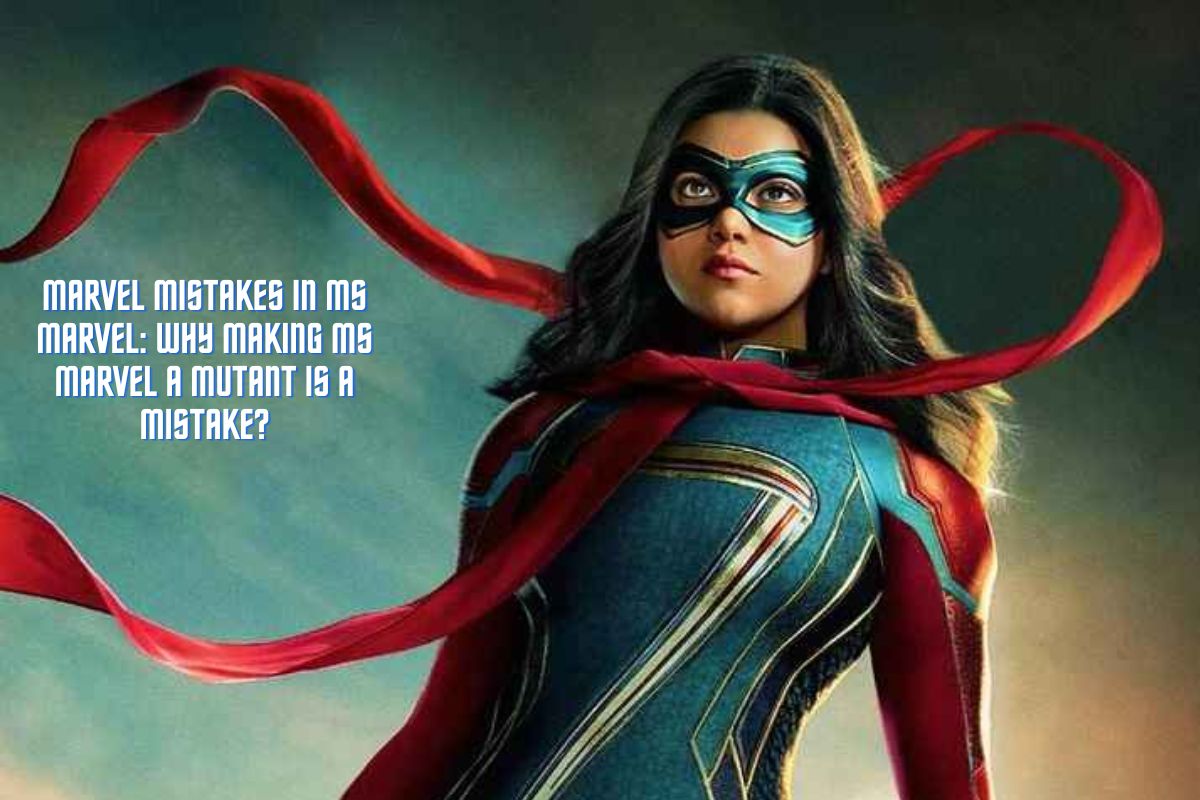A series on Disney+ Kamala Khan’s (Iman Vellani) Pakistani heritage and Muslim beliefs were two of the many accurate depictions of the character in Ms Marvel. With the series climax in sight, though, it’s tough to defend Marvel Studio’s alterations to Kamala’s comic book superhero roots. A new backstory for Kamala’s abilities seemed like a great idea, and Ms Marvel seemed to have it figured out at first. With each new episode, though, things became even more confusing and chaotic. Episode 6’s last sequence, “No Normal,” is a clear homage to mutants and the X-Men, which adds an unnecessary degree of complication to an origin story that already feels bloated and inadequate.
A week after their showdown with the DDC, Kamala and her friends Bruno (Matt Lintz) and Nakia (Yasmeen Fletcher) get together for one last goodbye. They have no idea when they will next see each other now that Bruno is off to Caltech. But before he leaves on his next adventure, Bruno tells Kamala that he analysed the family’s genetic makeup to figure out why the other half-Djinn members of her family didn’t develop superpowers. Kamala is the only one who can control the energy of the Light Dimension because of a mutation in her DNA.
The X-Men have become synonymous with mutations in the Marvel universe. Mutants are used to describe those who, due to a genetic quirk, are born with extraordinary abilities. Before Disney acquired Fox, Marvel Studios was prohibited from using the word “mutant,” despite its central role in the history of comic books.
Experience the epic Marvel moment you’ve been waiting for ⚡️
All episodes of #MsMarvel, an Original series from Marvel Studios, are now streaming on @DisneyPlus. pic.twitter.com/PwRN3J8Jlc
— Ms. Marvel⚡ (@msmarvel) July 15, 2022
For instance, Pietro (Aaron Taylor-Johnson) and Wanda (Elizabeth Olsen) could not be portrayed as mutants in Avengers: Age of Ultron. Because of this, it’s already odd that “mutation” is used to describe Kamala’s ability. To ensure that we know exactly what they’re talking about, Ms Marvel plays the theme song from the 1990s X-Men animated series as the truth is revealed. This theme song was also recently used on Doctor Strange in the Multiverse of Madness when Patrick Stewart guest starred as Professor X. Thus, there can be no doubt. Changing Kamala into a mutant was a terrible decision on Marvel Studios’ part.
In the realm of Marvel Comics, Kamala is an Inhuman. Inhumans are those with a specific genetic code that allows them to manifest incredible powers. These powers, however, only show up when an Inhuman has gone through a process called Terrigenesis. In the comics, Kamala’s powers are part of who she is, a trait that’s inextricably linked to her genetics and her body. Inhuman nature also allows each member of the species to manifest unique powers. That’s a straightforward origin story that allows Kamala to discover her secret family history, accept her powers, and forge a new identity for herself.
Marvel Studios completely rewrote Kamala’s origin to make her half-Djinn because they are unwilling to explore the Inhumans in the MCU (at least for now). Ms Marvel has revealed that the Djinn inhabit a parallel universe and have the ability to manipulate light, but that they are unable to use this ability on Earth. Because of this, the evil organisation known as the ClanDestines pursues Kamala, a half-Djinn who still possesses the ability to manipulate the Light Dimension. These bad guys are asking Kamala to help them get back to Earth by opening a portal to the Light Dimension.
Ms Marvel makes things more complicated by having Kamala wear a mystic bracelet to use her powers, even though her half-Djinn origin has a perfect parallel to the original Inhuman storyline. The bracelet only awakened the power already present in Kamala, but the young girl must continue to wear the artefact at all times if she is to fulfil her destiny as a superhero. In and of itself, that’s a poor decision because it requires Kamala to give up control of her abilities and instead channel them through a physical object. In the fifth episode, Kamala’s friend and fellow ClanDestine member Kamran (Rish Shah) also begins to exhibit these peculiar abilities.
Since Kamran is half-Djinn like Kamala, he is granted the ability to channel the light when his mother Najma (Nimra Bucha) seals off the rift to the Noor Dimension that was threatening to swallow up Earth. Since both Kamala and Kamran are thought to be descended from Djinn, it stands to reason that they would share similar abilities. However, the fact that, unlike Kamala, Kamran doesn’t need a bracelet to use his special abilities is never mentioned in the show. If the power of the half-Djinn comes from within, why would Kamala still need to wear the bracelet? For the sake of continuity, that pretty much proves the bracelet is a Kree Nega-Band, which is what Ms Marvel’s post-credit scene was trying to establish.
Marvel Studios’ preoccupation with the future seems to get in the way of individual films’ ability to tell a unified story. The introduction of a mutant gene into Kamala’s new origin story only serves to exacerbate the problem of her being forced to wear the bracelet. How can the ability of Kamran to bend light be explained if Kamala, in addition to being a half-Djinn, also needs to be half-mutant to manifest her powers? Otherwise, he must be a mutant or a Djinni.
Besides that, if Marvel Studios is ready to introduce mutations as a source of diversified superpowers, it’s weird that Ms Marvel decides to claim Kamala’s Djinn powers were only unlocked due to a special gene. So what about the rest of the regular mutant population who aren’t part of a family from another dimension? From what do they draw their abilities? Furthermore, if Kamala’s abilities truly stem from her mutation, then there’s no reason to add a cosmic artefact to the mix.
Kamala’s new origin story feels off, but we can see why Marvel Studios is hesitant to add the Inhumans to the MCU after the Inhumans ABC series bombed. If Kamala had simply been a mutant, a half-Djinn, or the new owner of the Nega-Bands, then the series might have had some potential for intrigue.
Any one of these three storylines could stand on its own, but combining them leaves plot holes and saps the show of its potential originality; and once again, we see two superpowered individuals with identical abilities going at it. The Nega-Bands are likely the driving force behind The Marvels, and the film will provide Kamala with an excellent opportunity to dispose of at least one of the sources of her power. However, future productions will face challenges reconciling Kamala’s dual genetic specificity.



